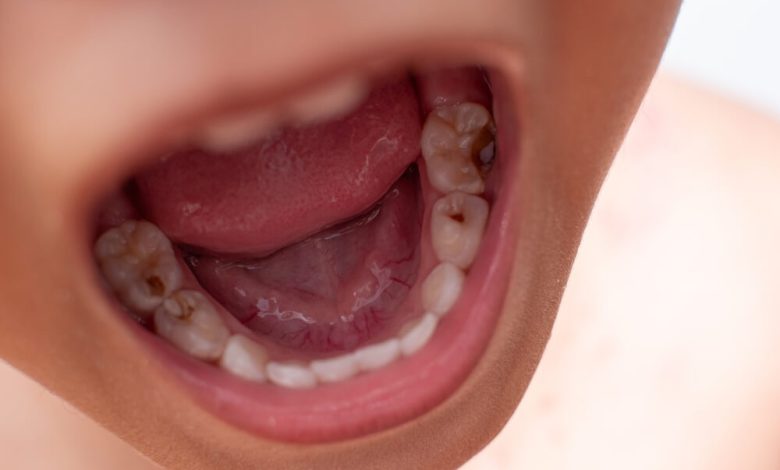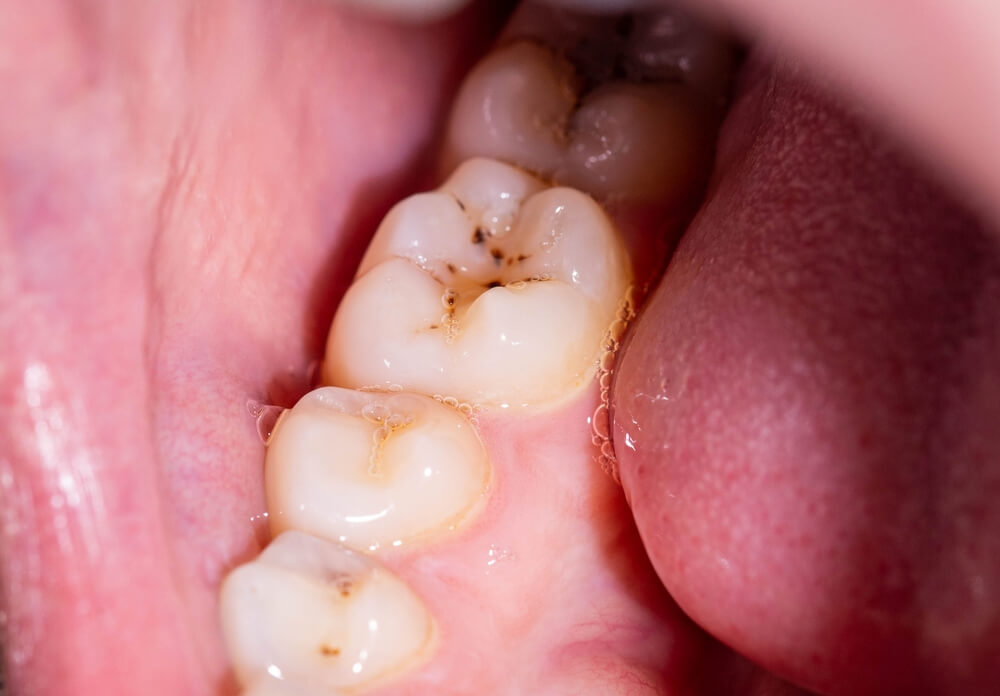What Do Cavities Look Like? A Guide to Identifying Tooth Decay

Cavities can greatly affect oral health if untreated. This guide helps you identify signs of tooth decay at various stages, from early to advanced. By recognizing both visual and symptomatic cues, you can maintain dental health proactively. We’ll also cover the importance of regular check-ups for early detection and discuss effective treatment options. Explore this overview to protect your teeth from decay and ensure a healthy smile.
Understanding Cavities and Their Impact on Oral Health
Cavities, also known as dental caries, are a common dental health issue that can have significant impacts if left untreated. Understanding what cavities look like and recognizing the signs of tooth decay early on are crucial steps in maintaining optimal oral health.
Cavities typically start as small, chalky white spots on the enamel surface of your teeth. As they progress, these spots can turn brown or black and may eventually form visible holes or pits. The most common signs of tooth decay include tooth sensitivity to hot or cold temperatures, pain when biting down, visible pits or holes in your teeth, and even bad breath.
Cavity formation begins when plaque (a sticky film of bacteria) builds up on your teeth. These bacteria produce acids that erode the enamel and dentin layers of your teeth over time. Factors such as poor oral hygiene, frequent snacking on sugary foods and drinks, dry mouth conditions, and not getting enough fluoride can accelerate this process.
Maintaining good dental health involves regular brushing with fluoride toothpaste, flossing daily to remove plaque between teeth, reducing sugar intake, drinking plenty of water to stimulate saliva production (which helps neutralize acids), and visiting your dentist regularly for check-ups and cleanings. By understanding the appearance and signs of cavities early on, you can take proactive measures to prevent further decay and maintain a healthy smile.
The Different Stages of Tooth Decay (From Early Signs to Advanced Cavities)
Tooth decay is a progressive condition that can severely impact oral health if left untreated. Understanding the different stages of tooth decay can help in early detection and prevention.
The initial tooth decay stage begins with the demineralization of enamel, often caused by acids produced from bacterial plaque. At this point, you might notice white spots on your teeth, which are early stage cavities. These spots indicate areas where minerals have been lost but can still be remineralized with proper dental care and fluoride treatments.
As the condition progresses to the second stage, known as progressive tooth decay, the enamel continues to break down, forming small holes or cavities. This is when you might start experiencing sensitivity to sweet foods or cold beverages. Regular dental check-ups are crucial at this stage to prevent further damage.
If left untreated, these cavities can advance deeper into the dentin layer of the tooth, leading to advanced cavities. At this advanced stage, you may experience significant pain and discomfort as bacteria reach the nerve endings within your teeth. Treatment options become more invasive and may include fillings or even root canals.
Common Symptoms Associated with Cavities Beyond Visual Cues

When it comes to identifying cavities, most people think of visible holes or discoloration on the teeth. However, there are several other symptoms that can indicate the presence of a cavity even before these visual cues become apparent.
One of the most common symptoms associated with cavities is sensitivity from cavities. This sensitivity often manifests as a sharp pain when consuming hot, cold, or sweet foods and drinks. The discomfort occurs because tooth decay exposes the dentin layer beneath the enamel, which contains tiny tubules leading to the tooth’s nerve center.
Pain from tooth decay is another significant indicator that you might have a cavity. This pain can range from mild discomfort to severe throbbing and can occur spontaneously or in response to pressure while chewing. If you’re experiencing persistent toothaches without an obvious cause, it might be time to consult your dentist.
Other symptoms of a cavity include bad breath and an unpleasant taste in your mouth resulting from bacterial activity within the decayed area. Additionally, you might notice swelling or redness in your gums near the affected tooth as your body attempts to fight off infection.
Understanding these less obvious symptoms is crucial for early detection and treatment of cavities, helping prevent further complications such as infections or even tooth loss. Regular dental check-ups remain essential for maintaining oral health and catching potential issues before they escalate.
The Importance of Regular Dental Check-Ups for Early Cavity Detection
Regular dental check-ups play a crucial role in maintaining oral health and detecting cavities early. These routine visits to the dentist are not just about keeping your smile bright; they are essential for preventing more serious dental issues down the line.
One of the primary benefits of dental check-ups for cavities is early detection. Cavities can develop without any noticeable symptoms, and by the time you feel pain, significant damage may have already occurred. During a professional dental cleaning and exam, your dentist can identify early signs of tooth decay that you might miss at home. This allows for prompt treatment, which is often less invasive and more cost-effective than addressing advanced decay.
In addition to cavity detection, regular dentist visits for oral health include comprehensive cleanings that remove plaque and tartar buildup. Even with diligent brushing and flossing, some areas in your mouth can be hard to clean thoroughly on your own. Professional cleaning ensures these areas are addressed, reducing the risk of cavities and gum disease.
Overall, scheduling regular dental check-ups is a proactive step towards maintaining optimal oral health. By catching cavities early and ensuring thorough cleanings, you can prevent minor issues from becoming major problems, ultimately saving time, discomfort, and expense in the long run.
How Are Cavities Addressed by Dental Professionals? (Treatment Options)
When it comes to treating cavities, dental professionals have a range of effective methods to restore the health and functionality of your teeth. Understanding these treatment options can help you make informed decisions about your dental care.
One of the most common approaches is cavity filling procedures. This method involves removing the decayed portion of the tooth and then filling the area with a durable material such as composite resin, amalgam, or porcelain. Composite resin is particularly popular due to its ability to match the natural color of teeth, providing an aesthetically pleasing result.
Treating tooth decay early is crucial for preventing further damage and potential complications. If cavities are detected in their initial stages, less invasive treatments like fluoride therapy may be sufficient to remineralize and strengthen the enamel.
For more advanced cases where decay has significantly damaged the tooth structure, dental restoration methods for cavities come into play. These may include inlays, onlays, or crowns that cover and protect what remains of the natural tooth while restoring its shape and function.
In severe instances where decay has reached the pulp (the innermost part of the tooth), a root canal procedure might be necessary. This involves removing infected tissue from within the tooth before sealing it with a filling or crown.
Preventative Measures to Avoid Cavities and Maintain Healthy Teeth
Maintaining healthy teeth and preventing cavities is a lifelong commitment that involves a combination of good oral hygiene practices, dietary choices, and regular dental check-ups. Here are some essential preventative measures to keep your smile bright:
- Brush and Floss Regularly: Brushing your teeth at least twice a day with fluoride toothpaste and flossing daily helps remove food particles and plaque that can lead to cavities.
- Limit Sugary Foods and Drinks: Consuming high-sugar foods and beverages can increase the risk of tooth decay. Opt for healthier alternatives like fruits, vegetables, and water.
- Use Dental Sealants: Dental sealants are a protective coating applied to the chewing surfaces of back teeth (molars) where decay often starts. This simple procedure can significantly reduce the risk of cavities in children and adults alike.
- Fluoride Treatments: Fluoride strengthens tooth enamel, making it more resistant to decay. Using fluoride toothpaste or receiving professional fluoride treatments from your dentist can provide added protection.
- Regular Dental Check-ups: Visiting your dentist every six months for cleanings and examinations ensures that any potential issues are identified early on before they become serious problems.
- Stay Hydrated: Drinking plenty of water helps wash away food particles and bacteria while also promoting saliva production, which naturally protects against cavities by neutralizing acids in the mouth.
- Avoid Tobacco Products: Smoking or using other tobacco products can significantly harm your oral health, leading to gum disease, tooth loss, and even oral cancer.
By incorporating these preventative measures into your daily routine, you can effectively reduce the risk of cavities and maintain healthy teeth for years to come. Remember that good oral health is not only about having a beautiful smile but also about overall well-being.
